Click on the map below to learn more
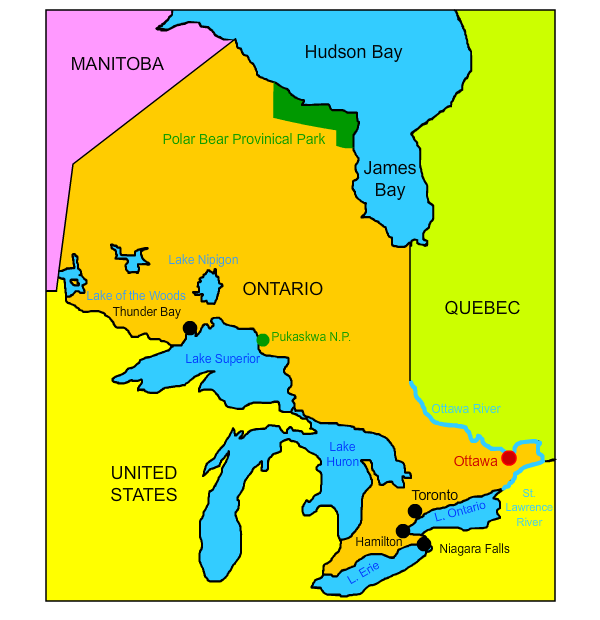
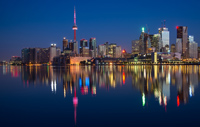 |
TorontoToronto is Canada's largest city and the fourth largest city in North America behind Mexico City, New York City, and Los Angeles. In fact 1/3 of all Canadians live within 60 kilometers (about 36 miles) of Toronto. Known as the "economic engine of Canada," Toronto is a major international center and destination and the cultural and business center of Canada. Toronto is also one of the world's most culturally diverse cities. One in two people who live in Toronto were born in a nation other than Canada. Toronto's beautiful skyline, overlooking Lake Ontario, features the 1,815 foot tall CN Tower, one of the world's tallest free-standing structures. Next door to the CN Tower is Rogers Plaza (formerly the Skydome), the world's first sporting arena to feature a fully retractable roof. |
|
| Back to Map | ||
 |
HamiltonLocated about 40 miles southwest of Toronto, Hamilton and its surrounding areas are home to nearly three quarters of a million people. Residents of the port city are known as Hamiltonians. The city is sometimes called the "waterfall capital of the world" as over 100 waterfalls can be found in and around Hamilton. Hamilton is home to the Royal Botanical Gardens, an important tourist attraction between Niagara Falls and Toronto that is home to over 1,100 species of plants. It is also a refuge for Canada's largest remaining population of endangered red mulberry trees. In addition, McMaster University is located in Hamilton. With an enrollment of nearly 30,000 students, it is Canada's tenth largest university system. |
|
| Back to Map | ||
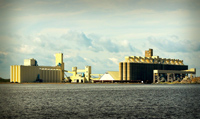 |
Thunder BayThunder Bay is a city in western Ontario on the shores of Lake Superior. Over 120,000 people live on or around Thunder Bay. Its name comes from the huge bay at the head of Lake Superior. The area that is now Thunder Bay was originally a fur trading post and later an important transportation link for grains grown in central Canada to reach the St. Lawrence River and beyond via the Great Lakes. The city itself was formed in 1970 when the cities of Fort William, Port Arthur, and two townships merged. Citizens voted on the new city's name and Thunder Bay narrowly defeated Lakehead. Thunder Bay is known for its cold winters. In 1982, it set the record for Ontario's coldest day with wind chill when it dropped to -72.4 degrees Fahrenheit. Conversely, summer days can get extremely hot. On August 7, 1983, the temperature in Thunder Bay reaches 104.5 degrees Fahrenheit. |
|
| Back to Map | ||
 |
OttawaLocated in southeastern Ontario, Ottawa is the capital of Canada and second largest city in Ontario. Over 1.3 million people live in and around Ottawa. As capital, Ottawa is the political center of Canada. It is the home of numerous important Canadian cultural institutions including the National Gallery of Canada, the National Arts Centre, the Canadian War Museum, and the Canadian Museum of Nature. Ottawa is home to 24 national historic sites including the Rideau Canal, the oldest working canal in North America and a UNSECO World Heritage Site. The canal connects the city of Ottawa to Lake Ontario and the St. Lawrence River. It was built to keep lines of supply and communication open between the city and upper Canada in case of an American invasion! |
|
| Back to Map | ||
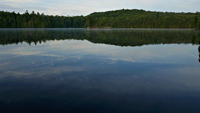 |
Lake NipigonLake Nipigon is a large lake in western Ontario. The meaning of the word "Nipigon" is unclear, though it may have been a derivation of the native term for "deep water" or "water that reaches over the horizon." With an area of roughly 1,872 square miles, it is the largest lake entirely within the borders of Ontario. The lake is famous for its unusual green-black sand, which is full of a dark green particle called pyroxene. |
|
| Back to Map | ||
 |
Polar Bear Provincial ParkPolar Bear Provincial Park is a huge area of wilderness on the shores of the James and Hudson Bays in isolated northern Ontario. Its mission is to preserve the region's tundra ecosystem and the several hundred polar bears that migrate through the area. The park is also home to moose, caribou, arctic fox, seals, walrus, beluga whales, and other arctic wildlife. The park is so isolated that it is only accessible by airplane. Furthermore, visitors need special permission to gain entrance. The only evidence of human habitation in the park is an abandoned radar station, part of a former military defense line. Polar Bear Provincial Park is the largest park in Ontario. Because of its remote location, there are no visitor facilities such as bathrooms or lodgings. |
|
| Back to Map | ||
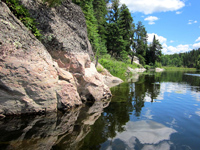 |
Pukaskwa National ParkLocated on the shores of Lake Superior, Pukaskwa National Park celebrates the great Canadian Shield with its expansive boreal forests and incredible lake vistas. The park preserves one of the longest stretches of undisturbed wilderness anywhere in the Great Lakes region. Visitors can cross the White River Suspension Bridge, set about 60 feet above Chigamiwinigum Falls, providing incredible (albeit scary) views. The park is home to black bears, timber wolves, moose, beavers, owls, eagles, and many other species. Recently, however, it was determined that caribou have been extirpated from the park, likely due to predation by wolves. |
|
| Back to Map | ||
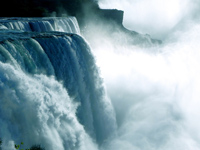 |
Niagara FallsShared by the United States and Canada, Niagara Falls is the most voluminous waterfall in North America, and one of the world’s most spectacular sights. The word"Niagara" is said to mean "Thunder of Waters" in Iroquois language. The falls attract millions of visitors each year and are also a valuable source of hydroelectric power. Niagara Falls is actually comprised of three different falls: Horseshoe Falls, American Falls, and the smaller Bridal Veil Falls. Visitors to the falls can ride The Maid of the Mist, a boat that travels in back of Horseshoe Falls, where they get sprayed with mist generated from the falling water. |
|
| Back to Map | ||
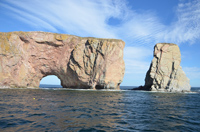 |
St. Lawrence RiverFlowing for a length of about 743 miles, the St. Lawrence River connects the Great Lakes to the Atlantic Ocean. It flows into the Gulf of St. Lawrence, which is the largest estuary in the world. The upper parts of the St. Lawrence River are home to a region known as Thousand Islands. There are actually 1,864 islands. One of the criteria of each "island" is that is supports at least two living trees! |
|
| Back to Map | ||
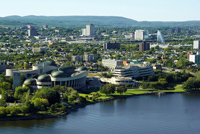 |
Ottawa RiverThe Ottawa River is a major tributary of the St. Lawrence River and forms most of the border between Ontario and Quebec. It flows for a distance of about 790 miles. |
|
| Back to Map | ||
 |
Lake SuperiorLake Superior is the largest of the great lakes and second largest lake in the world. Area: 31,700 square miles |
|
| Back to Map | ||
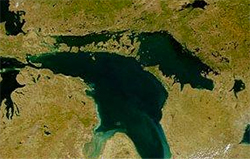 |
Lake HuronLake Huron is the second largest of the Great Lakes and the fourth largest lake in the world. Area: 23,000 square miles |
|
| Back to Map | ||
 |
Lake OntarioLake Ontario is the smallest of the Great Lakes and the 14th largest lake in the world. Area: 7,115 square miles |
|
| Back to Map | ||
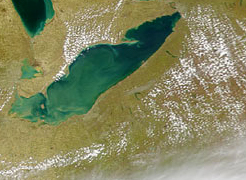 |
Lake ErieLake Erie is the fourth largest of the Great Lakes and the 12th largest lake in the world. Length: 241 miles
|
|
| Back to Map | ||
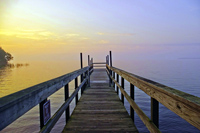 |
Lake of the WoodsLake of the Woods is a large lake that covers parts of Minnesota, Ontario, and Manitoba in the Canadian Shield. It is over 70 miles long, has 65,000 miles of shoreline, and over 14,500 individual islands. The lake supports a vast array of wildlife and provides critical nesting habitat for white pelicans, piping plovers, common loons, bald eagles, and other birds.
|
|
| Back to Map | ||
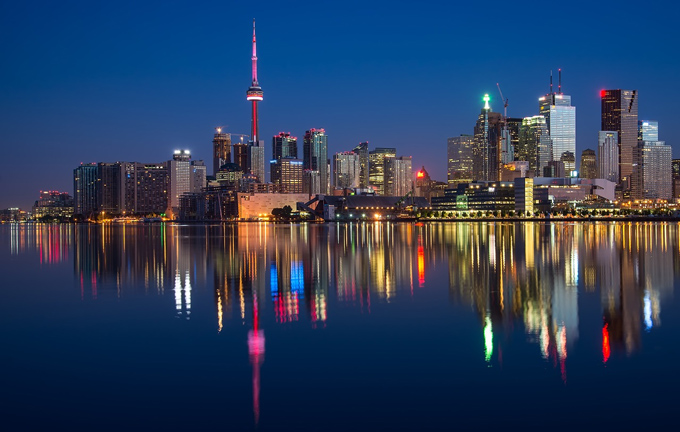 |
||
| Toronto Skyline | ||
| Population: | 14,490,000 | |
| Area: | 415,000 sq. miles | |
| Capital City: | Toronto | |
| Largest City: | Toronto | |
| Currency: | Canadian Dollar | |
| Official Language: | English | |
| GDP (Gross Domestic Product) | $764 Billion | |
|
||
 |
||
| Ontario's flag contains the Royal Union flag in its canton (upper left part of a flag) in honor of its English heritage, and the Ontario coat of arms on the right. The coat of arms contains St. George's Cross as a tribute to England and three golden maple leaves in front of a green background to honor Canada as a nation. | ||